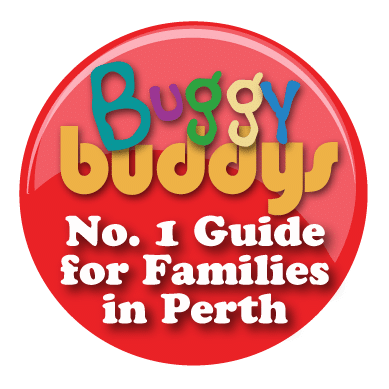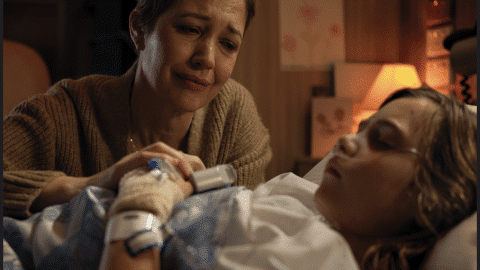As a parent, your primary goal is to ensure the safety and well-being of your children. However, accidents and emergencies can occur, and knowing how to respond effectively will make a significant difference. This guide provides essential first aid tips for parents, focusing on handling choking, burns, and common injuries. By understanding and implementing these strategies, you’ll be better prepared to manage accidents and emergencies, able to provide the necessary care until medical assistance arrives.
Importance of First Aid Training
First aid training provides parents with the confidence and skills to handle emergencies effectively. By learning basic emergency life support, parents can react promptly to various situations, potentially saving lives.
Skills Training College: A Leading Provider
Skills Training College is a trusted vocational training college that offers comprehensive Australia wide first aid courses. Our trainers deliver high-quality education, ensuring participants gain practical skills and knowledge required for effective first aid response. Courses include HLTAID009 Provide Cardiopulmonary Resuscitation and HLTAID011 Provide First Aid, among others, all of which are nationally recognised qualifications.
At Skills Training College, we offer a wide variety of nationally accredited vocational education programs. Besides first aid, we have training programs in hospitality, healthcare, security, construction, and more.
Check out our security training in Brisbane options to find out more.
First Aid for Choking in Children
Recognising the Signs of Choking
Choking is a common emergency that can happen to children, especially those under the age of five. Recognising the signs of choking is crucial for a swift response. Look for indications such as difficulty breathing, coughing, gagging, and a bluish tint to the skin (cyanosis). If the child is unable to cry, speak, or make any noise, it’s a clear sign that their airway is obstructed.
Immediate Steps to Take When a Child is Choking
When you suspect that a child is choking, it’s essential to act quickly:
- Stay Calm: Keeping your composure helps you think clearly and act efficiently.
- Check for Blockages: Look inside the infant’s mouth and remove any visible obstructions.
- Encourage Coughing: If the child is coughing, let them continue as this may dislodge the object.
- Perform Back Blows and Abdominal Thrusts: For children over one year old, perform five back blows followed by five abdominal thrusts. Lean the patient forward and deliver up to five firm back blows between the shoulder blades using the heel of your hand. After each blow, check to see if the obstruction has been cleared. If the blockage has not cleared after 5 back blows, apply up to 5 chest thrusts.
How to Perform Chest Thrusts on Children
Administer chest thrusts by positioning one hand on the middle of the patient’s back for support and placing the heel of the other hand on the lower half of the sternum. These thrusts should be slower and more forceful than CPR compressions. After each thrust, check if the obstruction has been cleared.
If the blockage remains after five thrusts, continue alternating five back blows with five chest thrusts until medical assistance arrives.
First Aid for Burns and Scalds
Types of Burns and Their Severity
Burns are classified into three categories based on their severity:
- First-Degree Burns: Affect only the outer layer of skin, causing redness and pain.
- Second-Degree Burns: Involve the outer and underlying layers of skin, resulting in blisters, swelling, and severe pain.
- Third-Degree Burns: Penetrate the full thickness of the skin, potentially damaging nerves and causing white or charred skin.
Immediate Treatment for Minor Burns
For minor burns (first-degree and small second-degree burns):
- Cool the Burn: Hold the burned area under cool running water for 10-20 minutes to relieve pain and swelling.
- Protect the Burn: Cover with a sterile, non-stick bandage or cloth.
- Relieve Pain: Administer over-the-counter pain relievers like ibuprofen or paracetamol but always follow the directions on the packet.
- Avoid Home Remedies: Do not apply ice, butter, or ointments as they can worsen the burn.
When to Seek Medical Help for Burns
Seek medical assistance immediately if:
- The burn is larger than the size of the child’s hand.
- It affects the face, hands, feet, genitals, or major joints.
- It appears to be a third-degree burn.
- There are signs of infection, such as increased redness, swelling, or pus.
First Aid for Common Childhood Injuries
Treating Cuts and Scrapes
Cuts and scrapes are frequent injuries in children:
- Clean the Wound: Wash with soap and water to remove dirt and debris.
- Stop the Bleeding: Apply gentle pressure with a clean cloth or bandage.
- Protect the Wound: Cover with a sterile bandage or adhesive strip.
- Monitor for Infection: Look for signs like redness, swelling, or pus, and seek medical advice if these appear.
First Aid for Sprains and Strains
For sprains and strains:
- Rest: Keep the injured area immobilized.
- Ice: Apply ice wrapped in a cloth for 15-20 minutes to reduce swelling.
- Compression: Use an elastic bandage to compress the area.
- Elevation: Raise the injured limb above heart level.
Managing Head Injuries in Children
Head injuries require careful monitoring:
- Check for Serious Symptoms: Watch for loss of consciousness, vomiting, severe headache, or confusion.
- Apply Ice: Use ice to reduce swelling for minor bumps.
- Seek Medical Attention: For serious symptoms or if the child is under one year old, seek immediate medical help.
Managing Allergic Reactions in Kids
Identifying Allergic Reactions
Allergic reactions can vary from mild to severe (anaphylaxis):
- Mild Reactions: Include rashes, itching, and mild swelling.
- Severe Reactions: Involve difficulty breathing, swelling of the face or throat, and a drop in blood pressure.
Using an EpiPen: Step-by-Step Guide
An EpiPen can save a child’s life during a severe allergic reaction:
- Remove the Safety Cap: Pull off the blue safety release.
- Administer the Injection: Hold the EpiPen with the orange tip facing down. Press firmly against the child’s outer thigh until you hear a click.
- Hold for 3 Seconds: Keep the EpiPen in place for three seconds to ensure the medication is fully injected.
When to Call for Emergency Help
Call for emergency medical assistance if:
- The child shows signs of anaphylaxis.
- Symptoms do not improve after using an EpiPen.
- The child has a known severe allergy and begins to show symptoms.
First Aid for Poisoning in Children
Common Household Poisons
Children are curious and may ingest harmful substances such as:
- Medications
- Cleaning products
- Plants
- Pesticides
Immediate Steps to Take if Poisoning is Suspected
If you suspect poisoning:
- Stay Calm: Keep the child calm and avoid inducing vomiting.
- Identify the Substance: Try to determine what and how much was ingested.
- Call Poison Control: Contact the Poison Information Centre (13 11 26 in Australia) for guidance.
- Follow Instructions: Follow the advice given by poison control experts.
Preventing Poisoning Incidents at Home
Prevent poisoning by:
- Storing hazardous substances out of reach.
- Using child-proof caps on medications.
- Educating children about the dangers of ingesting unknown substances.
Essential First Aid Supplies for Parents
Building a First Aid Kit for Your Home
A well-stocked first aid kit is essential and should include:
- Adhesive bandages in various sizes
- Sterile gauze pads and adhesive tape
- Antiseptic wipes and ointments
- Tweezers and scissors
- Pain relievers (child-safe)
Keeping Your First Aid Supplies Up-to-Date
Regularly check your first aid kits to: replace expired items, replenish used supplies and update medications as per your child’s current needs.
Conclusion
Equipping yourself with first aid knowledge is crucial as a parent. By understanding how to handle choking, burns, and common injuries, you can provide immediate and effective care to your children. Regularly updating your first aid skills through courses and staying prepared with well-stocked first aid kits will help you manage emergencies confidently and efficiently. Remember, staying calm and taking swift action can make all the difference in a medical emergency.

















